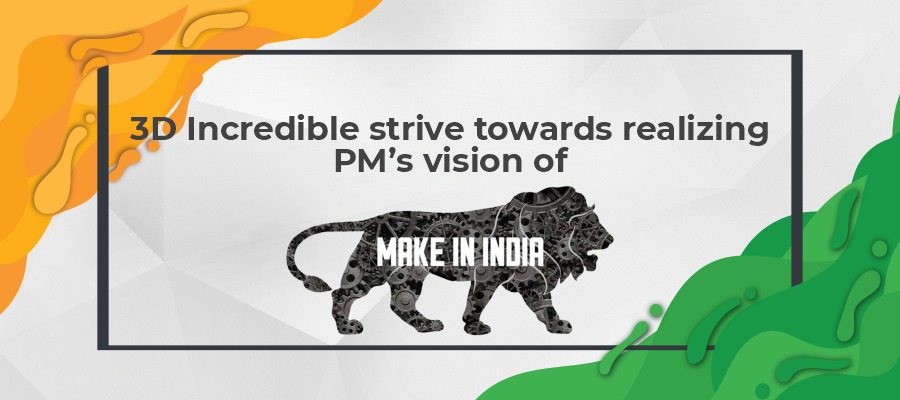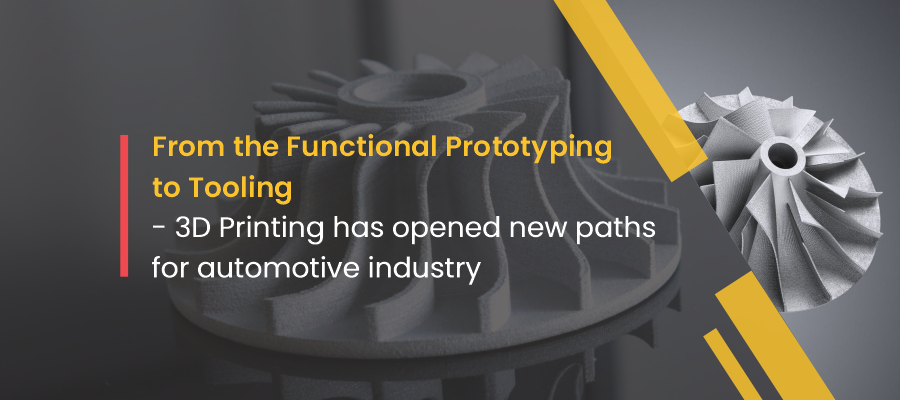3D metal printing or additive manufacturing(AM) has brought a unique set of opportunities and possibilities to revolutionise the way manufacturing of complex parts are processed.
Aerospace is one of the first industries to invest in large scale 3D printing. Aerospace – the branch of technology and industry concerned with both aviation and space flight – has been evolving and adopting the technology as early as the 1980s.
3D printing has enabled aerospace enterprises to create complex components which were impossible to manufacture with traditional techniques previously. This induced innovation while reducing costs and turnaround times in a complex, highly-regulated environment.
The aerospace industry is a prime sector to benefit from 3D printing, due to the high requirement of spare parts. It gives companies the flexibility to print specific aerospace parts for applications in hundreds or thousands of pieces without costly tooling changes. Beyond part production, 3D printing improves manufacturing capabilities for tools that are needed to create those parts. It can also facilitate lightweighting efforts for aerospace structures, increasing fuel savings and reducing environmental impact.
Here, we will discuss how 3D metal printing impacted the aerospace industry in various ways:
No wastage of material
Conventional manufacturing techniques such as subtractive manufacturing involve a large amount of waste production. With the onset of 3D metal printing, it has offered manufacturers to carry out production at a rapid pace printing complex parts layer by layer with additive manufacturing method. Therefore, the materials are used efficiently reducing the overall waste generated and most importantly, energy consumption is has also reduced as compared to traditional methods
Light weight parts saving fuel
Aerospace industry is one of the sectors where weight of components really matter. They require components that are stronger, lighter and durable. 3D printing technology has created new possibilities to meet these challenges. Additive manufacturing has brought forth the potential for numerous design related improvements in manufacturing of spacecraft. Spacecrafts with sturdier and lighter components allow better payload leading to a higher speed and improved fuel efficiency.
Improved Aircraft Design and supply chain
Another benefit 3D metal printing offers aerospace industry is improvement in the spacecraft design. The software for 3D printing is advanced enabling engineers to optimize designs that specifically benefit from additive manufacturing processes. These improvements will reduce the life-cycle cost of the spacecraft by increasing engine efficiency, reducing drag and decreasing the mass of the spacecraft. Developing and producing a spacecraft is a huge task, which long lead times, production schedules and production backlogs that may last years. As 3D printing allows production of varied components using a broad spectrum of raw material, it increases the production efficiency and improves the supply chain lead times leading to cost reduction of overall production process.
CONCLUSION
Additive manufacturing or 3D printing has impacted the aerospace industry in various aspects, the above mentioned points elaborate how they are best companion providing solutions for increased efficiency and reduced wastage. As the aerospace industry continues to see the value of 3D printing, more companies are expected to begin developing 3D printing operations and investing in the technology. Indeed, 3D printing capabilities offer ground-breaking real-time design, processing, trial, and implementation of customized components. Get in touch with us at 3D incredible AM Pvt. Ltd. for quick solutions regarding all your manufacturing needs completely processed in India under the guidance of our expert engineers with latest technology.




